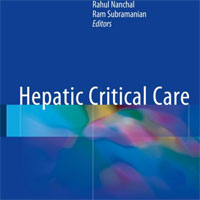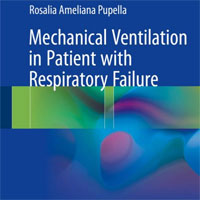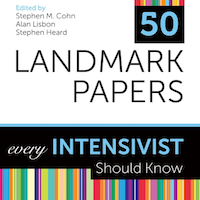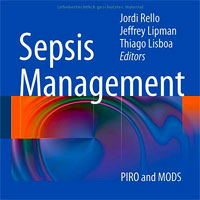Tag: ICU
Cytomegalovirus Infection in Immunocompromised ICU Patients: What Intensivists Need To Know
Cytomegalovirus (CMV) infection and disease in critically ill immunocompromised patients pose a unique challenge for intensivists. The broad spectrum of clinical presentations and the difficulty in distinguishing CMV-related... read more
Unlocking the Predictive Power of Nutritional Scores in Septic Patients
This study highlights the significant prognostic utility of nutritional status evaluation in septic patients admitted to internal medicine wards. Among the tools evaluated, the mNUTRIC score—likely because of its dual... read more
Dynamic Nomogram for AKI Prediction in ICU Patients with AHF
After strict screening, 1338 patients with acute heart failure (AHF) were included in the derivation set, and 3,129 in the validation set. Sepsis, use of human albumin, age, mechanical ventilation, aminoglycoside administration,... read more
Resource Utilization Associated with ECMO vs. Microaxial Flow Pump for Infarct-related Cardiogenic Shock
Microaxial flow pump was associated with lower resource utilization compared to venoarterial extracorporeal membrane oxygenation (VA-ECMO). Resource utilization should be incorporated in prospective RCTs and taken into account... read more
Risk Factors for Impairments in Quality of Life and Activities of Daily Living in Survivors of Critical Illness
This systematic review was able to identify that survivor of critical illnesses experienced changes in worsening quality of life, with impairment also in their functionality in terms of basic and instrumental activities of... read more
Central vs. Peripheral VA-ECMO Cannulation on Postoperative Graft Dysfunction in Lung Transplantation
Lung transplantation (LTx) is the definitive treatment for end-stage pulmonary diseases, with venoarterial extracorporeal membrane oxygenation (VA-ECMO) used as a common perioperative support. However, it remains unclear... read more
Unfractionated Heparin May Improve Near-term Survival in ICU Patients with Sepsis Pneumonia
This study found that early administration of heparin, particularly in sufficient doses (Heparin Sodium 5000 units/mL, 1 mL per dose, three times daily (TID)) for more than 7 d, was associated with reduced near-term mortality... read more
Management of Patients Supported with VA-ECMO
Veno-arterial extracorporeal membrane oxygenation (VA ECMO) application in adult patients has significantly increased in recent years. The Extracorporeal Life Support Organization (ELSO) registry includes more than 39,000... read more
Predicting MODS in Trauma-induced Sepsis with Machine Learning Models
The nomogram and machine learning models provide enhanced predictive accuracy for multiple organ dysfunction syndrome (MODS) in trauma-induced sepsis patients compared to traditional scoring systems. These tools, accessible... read more
Postoperative Liver Dysfunction After Lung Transplantation with Extracorporeal Life Support and 1-year Mortality
In this retrospective cohort study, we identified an elevated 1-year mortality rate among patients who developed postoperative liver dysfunction, as defined by the presence of HLD, DILI-like symptoms, and cholestasis subsequent... read more
Handbook of Critical and Intensive Care Medicine
The latest edition of this handbook is a concise yet comprehensive guide for attending physicians, fellows, residents, and students who cover the ICU. The chapters follow an outline format and are divided by organ system,... read more

Mental Health in the First Year After ICU-treated Sepsis
Existing data on the prevalence of mental health impairments (MHI) following sepsis and intensive care are based predominantly on self-reported symptoms assessed by using questionnaires, small sample sizes, and clinically... read more
Association Between the Lactate-to-Albumin Ratio (LAR) Index and AKI Risk in Critically Ill Patients with Sepsis
Lactate-to-albumin ratio (LAR) is an emergency predictive indicator of sepsis-related mortality. An elevated LAR is associated with poor outcomes in critically ill patients. However, its predictive value for acute kidney... read more
Which Antimicrobial Treatment for Patients with Bloodstream Infection During ECMO Support?
Enterococcus sp. was incriminated in about a third of BSI among patients with ECMO support. High appropriateness would only be obtained with piperacilline/tazobactam or carbapenems in association with vancomycin while 3rd... read more
Analgosedation and Delirium Practices in Critically Ill Patients
Before the COVID-19 pandemic, the management of analgosedation was characterized by the predominant use of targeted protocols that favored priority on mild and dynamic sedation in critically ill patients. During the pandemic... read more
Enhanced Prediction of ICU LOS Using a Stack Ensemble of Machine Learning Models
The Length of Stay (LoS) refers to the time between a patient's hospital admission and discharge. LoS is considered to increase as the complexity of the disease increases. A prolonged stay in the Intensive Care Unit (ICU)... read more
Hepatic Critical Care
This book focuses on the critical care of the patient with acute, acute on chronic and chronic liver failure as well as the peri-operative care of the patient with liver transplantation. Each of these disease processes is... read more

Risk Factors for Subsequent LRTI Following an Infant RSV Hospitalization
Fifteen percent of infants experience at least one other medically attended lower respiratory tract infection (MA LRTI) after an respiratory syncytial virus (RSV) hospitalization in the same season, and approximately half... read more
Predicting Sudden Decrease in Oxygenation in Mechanically Ventilated ICU Patients as a Surrogate Marker for ARDS
Acute Respiratory Distress Syndrome (ARDS) is a life-threatening form of respiratory failure characterized by widespread lung inflammation that severely impairs oxygenation. Affecting millions of patients worldwide, ARDS... read more
Unlocking the Predictive Power of Nutritional Scores in Septic Patients
The study highlights the mNUTRIC score's practicality and reliability in assessing nutritional and inflammatory risks in septic patients, particularly in non-ICU settings. These findings suggest its potential utility... read more
Cumulative Fluid Balance During the First Three ICU Days in Septic Patients with Heart Failure
In septic patients with HFpEF, positive fluid balance of CFB-day1 might improve the prognosis of patients. However, from the second day, fluid overload was associated with poor prognosis. Therefore, we propose that on... read more
AKI and Mortality Predictors of Systemic Autoimmune Diseases and COVID-19
The present study highlights renal parameters and outcomes associated with various systemic autoimmune diseases and COVID-19. Patients who presented with low oxygen saturation (... read more









